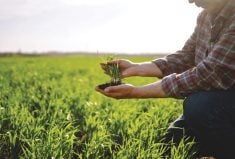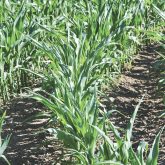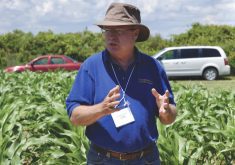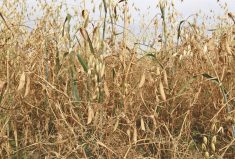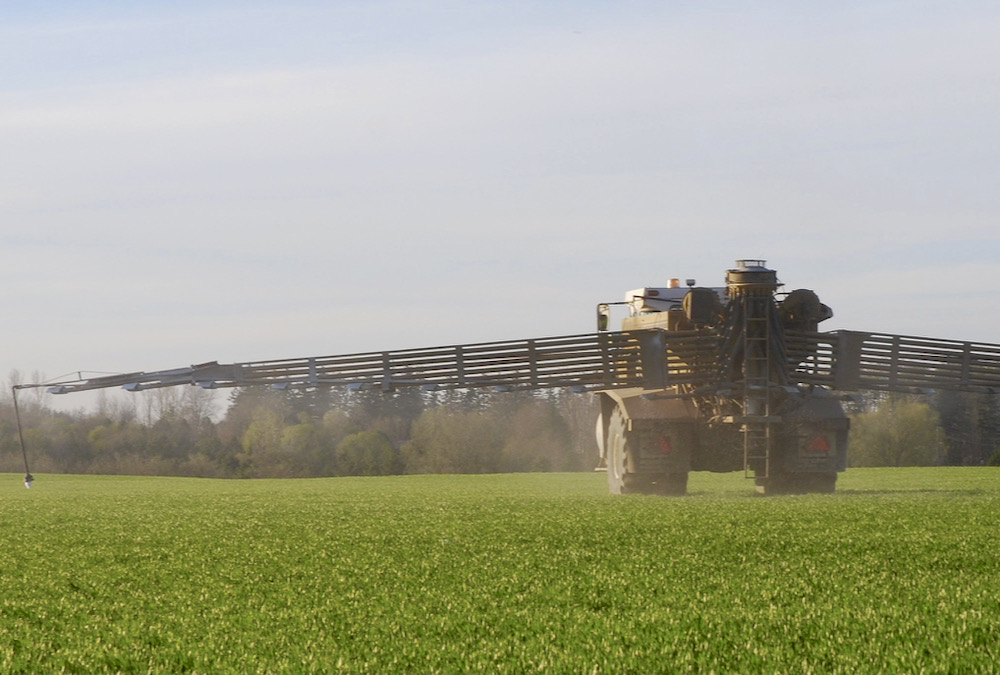If conservation agriculture is so great, why aren’t more farmers doing it? It’s a question that surfaced repeatedly during panel discussions at the recent World Congress on Conservation Agriculture in Winnipeg.
Presenters from countries spanning the alphabet from Australia to Zambia left little doubt that conservation agriculture is a worldwide movement. Zero tillage is growing rapidly. In some regions of Western Canada and Australia the adoption rate is over 90 per cent. In other regions, other integrated farming systems are catching on too.
Read Also

The big squeeze: How to be fair to siblings during farm succession
Managing sibling business relationships on family farms.
But we aren’t anywhere near a global tipping point.
Speaker after speaker extolled conservation agriculture as a means of maintaining soil quality while improving productivity. Josef Kienzle, an agricultural engineer with the United Nation’s Food and Agriculture Organization, said conservation farming, when done right, can increase crop yields, decrease production costs, produce higher profits and result in better livelihoods. As an example, he said reduced tillage can chop power requirements by 50 per cent, allowing for the use of smaller, more efficient machines on small holdings.
Yet as Yash Dang, a senior soil scientist with the Queensland Department of Science in Australia pointed out, only 7.1 per cent of the world’s arable land is no till. Even in Australia, the system appears to have plateaued, and some growers there are starting to talk about going back to tillage.
Such talk is heresy to soil conservationists, but it’s reality to producers who are confronting not only herbicide-resistant weeds but also increases in soil- and stubble-borne diseases.
“Strategic tillage is one of the tools in the tool box,” Dang said during a panel discussion on sustainability.
- More Country Guide: Soil plays a major role in precision sustainability
The risk of a possible slowdown in conservation agriculture comes at a time when the world faces a potential crisis in food production. Statistics presented during the conference showed the global population is projected to increase from the current 7.2 billion to 9.6 billion by 2050.
Feeding those teeming numbers will require a 60 per cent overall increase in food output, and in order to meet that target, crop yields must increase annually by 1.38 per cent globally, and by 1.87 per cent a year in developing countries.
But, as Kienzle noted, the world’s annual growth in crop yields is actually slowing. Currently it stands at 1.5 per cent. In 1960 it was 3.2 per cent. At the present rate, the annual increase by 2050 will be just 0.8 per cent — far short of the actual requirement.
Add to that the vagaries of weather brought on by climate change — crippling droughts in some regions, devastating floods in others — and the need for agricultural sustainability becomes even more urgent.
- More Country Guide: Humanity must stop treating soil like dirt
“Conservation agriculture is and always will be a fundamentally important movement,” said Rene Van Acker, a University of Guelph plant scientist. “It is a non-optional movement. It has to happen.”
But, as speakers acknowledged, there are roadblocks on the path toward adopting conservation agriculture. Constraints range from the lack of infrastructure and training in developing countries to human resistance to change, which can happen in any nation.
“There are a lot of things that are smart things to do, and a lot of things that are better things to do that people don’t do. It’s just human behaviour,” Howard Buffett, chairman and CEO of the Howard G. Buffett Foundation, a private charitable U.S. organization, said at a press conference during the conference.
“You do something a certain way. You’ve done it for years that way,” Buffett said in an effort to identify what he felt was the crucial question. “Why would you change?”
Above everything else, said Van Acker, the biggest barrier to adopting sustainable agricultural practices is a chronic problem with farm income.
He presented statistics during a panel discussion to show that, while farm cash receipts in Canada have increased over the decades, realized net farm income has remained relatively flat because of escalating input and operating costs.
Van Acker said farmers need opportunities to pursue sustainable practices and diverse cropping systems. But the reality is that, in industrialized countries, farmers are in a cost-price squeeze. How can they adopt diverse rotations when they are under increasing pressure to increase cash flows in order to stay ahead of rising costs and narrowing margins?
The story is the same the world over, whether you’re farming thousands of acres in Canada or a single hectare in Bangladesh, Van Acker said.
“Agriculture is an economic enterprise around the world,” Van Acker repeated. “Whether you’re a smallholder farmer or a large-scale farmer, you have similar burdens in that respect.”
Van Acker said producers who adopt diversified and integrated farming systems do so either out of personal conviction or by capturing opportunities for higher returns from the marketplace, such as organic agriculture.
Farmers have always responded to the marketplace and will continue to do so if given a good enough reason, Van Acker added. The whole zero-tillage movement in Western Canada was driven by farmers in response to soil erosion brought on by a series of dry years in the 1970s and 1980s. The eventual drop in the price of glyphosate when the patent for Roundup ran out encouraged zero till even more.
Van Acker said governments have a role to play in giving producers opportunities to explore new practices. That requires research funding to provide farmers with a scientific base to pursue sustainability.
Unfortunately, government policies can be counterproductive to conservation agriculture. Many criticize the U.S. ethanol program because it subsidizes corn production and encourages intensive cropping, which then contributes to soil erosion in the Corn Belt.
Jodi DeJong-Hughes, a regional extension educator at the University of Minnesota, agreed government policies, which tend to favour corn and soybeans, are important factors affecting conservation agriculture. Another factor is land ownership. DeJong-Highes said farmers who own the land may be more inclined to practise good stewardship than those who rent it and are only interested in getting as much return out of it as possible.
In the end, the public may decide the future of conservation agriculture. In the United States, public concern about damage from run-off agricultural chemicals in Chesapeake Bay and the Gulf of Mexico could result in government regulations on fertilizer use. A growing public interest in how food is grown and how animals are raised could also extend to how the land is farmed. That could force farmers to treat their soil more sustainably.
“At the end of the day,” said Van Acker, “it is the demands of society that drive our agriculture.
This article appeared as “The soil shock” in the July 2014 Country Guide special section on sustainability



